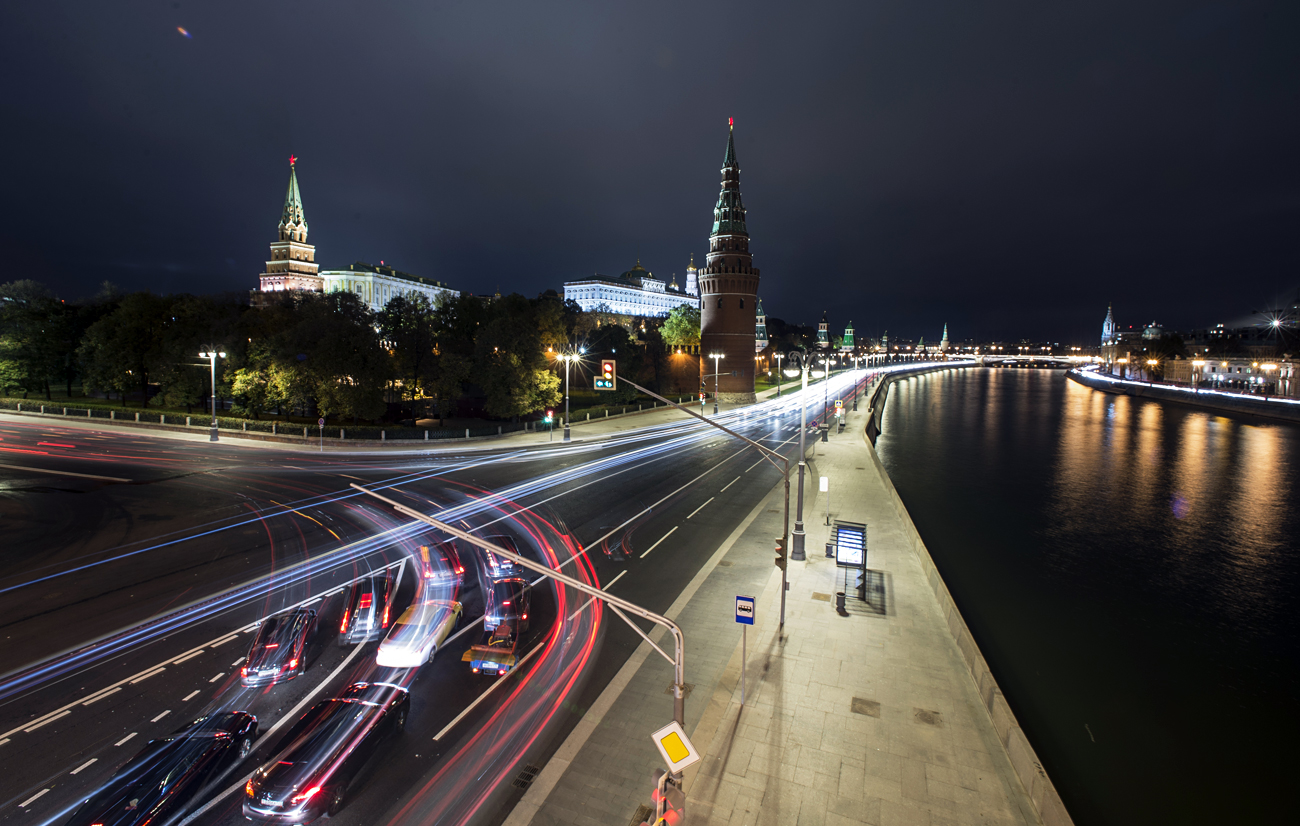
The Moscow Kremlin and the Kremlin Embankment, Moscow.
Evgeny Biyatov/RIA NovostiOver the past four months, Moscow residents have been puzzled by strange geo-positional glitches that occur near the Kremlin. GPS and Glonass navigators sometimes behave oddly in the vicinity of Russia’s seat of power, “teleporting” users around 20 miles (30 km) from the place where they actually are.
The anomaly was first spotted in the summer. It all began with Pokémon: Users playing Pokémon Go, which requires a GPS signal, began complaining that the signal was unstable in that area.
“Maybe there are rare Pokémon living in the Kremlin and security does not want anyone to catch them there,” popular blogger Ilya Varlamov wrote in July.
It was around the same time that drivers and users of taxicab apps began to report glitches too. While passing close to the Kremlin, their satellite navigators suddenly “transported” them to the Vnukovo or Domodedovo airports: For some reason, that is where the Kremlin anomaly was sending all users.
As a result, taxi customers had their journeys recorded as airport transfers, which cost them much more. “Every time I order a taxi from home, I end up in Vnukovo,” user Anna Lapkina wrote on Facebook.
Uber's Russia branch has said it is aware of the glitches but assured RIR that they “are not on a mass scale.” “Everybody is using social networks. I have seen probably a couple of these complaints recently. Our support service contacted those customers and there are no problems there,” said Yevgenia Shipova from the Uber press service.
However, users point out that the situation has not changed since the summer and similar problems have now also been recorded in other parts of Moscow. For example, satellite navigation has been behaving in a similar fashion near the settlement of Usovo outside Moscow, not far from President Vladimir Putin’s residence.
The glitches have even been picked up by Dmitry Peskov, Kremlin press secretary.
“I too was driving recently, on the weekend, and the Yandex app on my phone indeed switched to a completely different area. I didn’t make much of it, was just surprised,” he said, claiming he did not know what was causing the malfunction.
Grigory Bakunov, technology distribution director at Russia’s major search engine Yandex, tried to get to the bottom of the phenomenon. After stuffing his backpack full of various devices, Bakunov hopped on his Segway and started making loops around the “zone of instability.”
“Here’s what I found out: A powerful transmitter is installed (or maybe moving) somewhere inside the Kremlin. It imitates the operation of GPS and Glonass,” wrote Bakunov.
“Interestingly, the spoof signal “transports” you to the centre of Vnukovo airport. You could come up with many conspiracy theories as to why specifically there. I personally favour the theory that it has to do with fighting DJI video drones and the like.”
Modern drones have a map of zones they are forbidden to fly over, which include all the world’s airports – which could mean that the Kremlin is deliberately being “coded” as an airport in order to block unsanctioned drone flights.
“It is not quite clear why anybody would want to combat drones through GPS spoofing instead of just requesting that the relevant zones be added to the no-fly list, but it is of course not really our business,” said Bakunov.
Many people see the anti-drone theory as the most plausible one, arguing that this is probably how the Federal Protection Service (FSO) has decided to protect the Kremlin.
“Right behind the Petrovskaya Tower, there is a helicopter pad that Putin regularly uses. Yes, he likes to get to the Kremlin by helicopter,” wrote blogger Varlamov.
The FSO, however, denies it has anything to do with the glitches. “Yes, we heard about the taxi apps [navigation malfunctions and consequences for clients]. That began back in the summer,” a representative of the service told RIR, but added that they had nothing to do with it. “I would advise you to contact the software developers and ask them what is going on. We are not responsible for their glitches,” he insisted.
The association of developers, manufacturers and consumers of Glonass equipment and apps told RIR that the problem is not at their end “but anything is possible,” including software failures, geomagnetic fields, and white noise.
“Anton Vaino [new head of the Kremlin administration – RIR] is testing his ‘nooscope’ from the Kremlin,” one Facebook user joked, referring to a miracle device called a “nooscope,” which can “study humanity’s collective consciousness” and, so far, exists only as a concept. Russian media were busy writing in August about “academic papers” devoted to the nooscope, allegedly penned by Vaino.
“Maybe there are indeed jammers installed there [in the Kremlin],” said a representative of Glonass. “They block real information, replacing it. But why then are potentially dangerous drones, which may have a bomb attached to them, being directed to another strategic facility, an airport? What’s the point? Why are they not directed somewhere in a field, why Vnukovo?”
All rights reserved by Rossiyskaya Gazeta.
Subscribe
to our newsletter!
Get the week's best stories straight to your inbox